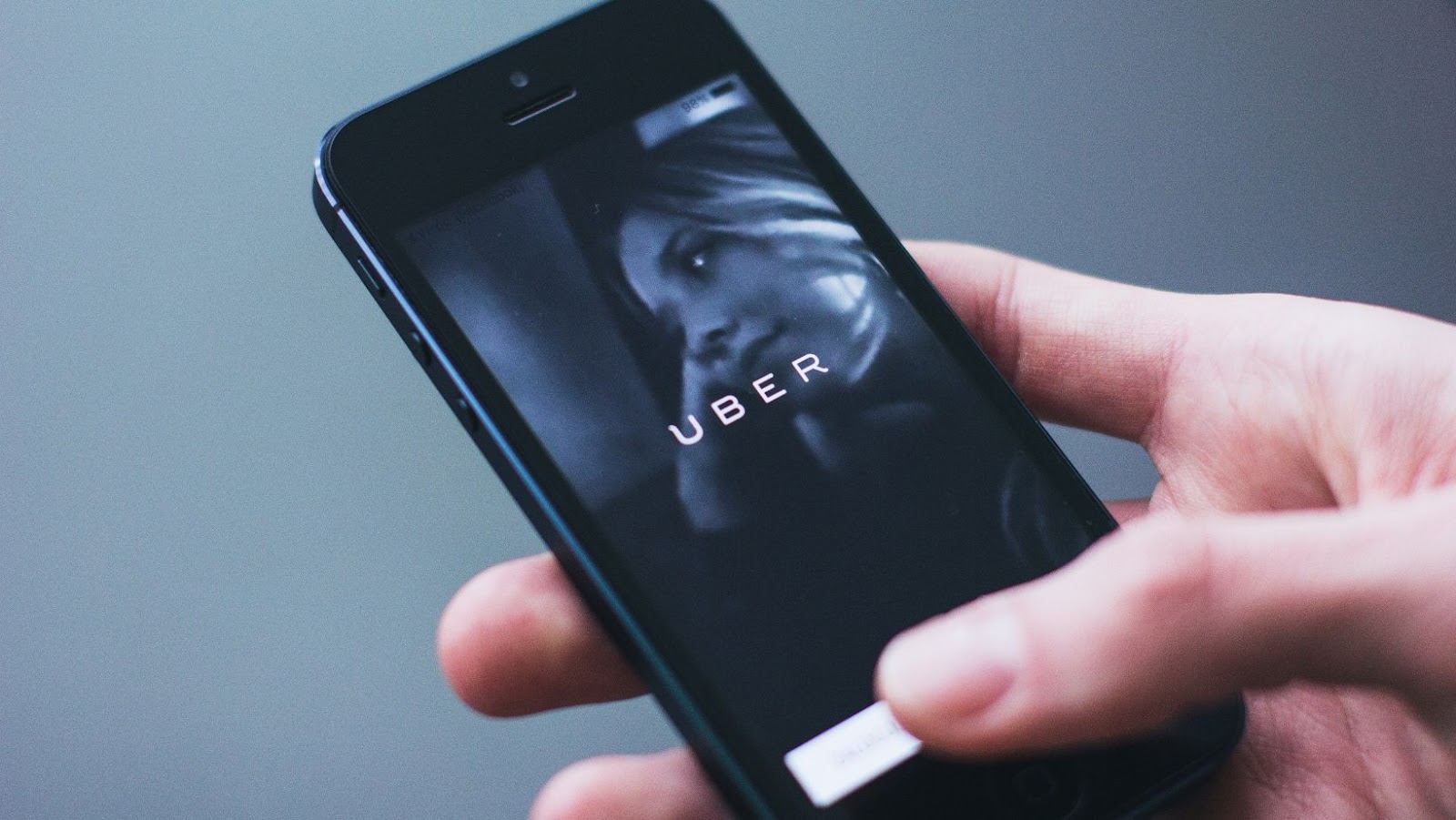
The user experience of Lyft and Uber are quite similar when it comes to the booking and ride process, but there are some key differences that you should be aware of. In this article, we’ll compare the user experiences of Lyft and Uber and discuss why one might be a better choice than the other depending on your needs.
Overview of Lyft and Uber
The sharing economy has exploded in the last few years, with ridesharing services leading the pack. Lyft and Uber are two of the biggest players in the market, but they have different levels of user experience. This guide will provide an overview of Lyft and Uber, their respective services, core business models and unique user experiences.
Lyft was founded in 2012 and is based in San Francisco, California. It markets itself as a more affordable option for any ride but has also become popular for its friendly drivers who can pick up passengers from any location. The service also provides options for users to choose among different types of vehicles for travel needs — from sedans to vans, to luxury SUV’s — allowing riders more convenience when choosing a vehicle type that fits their budget or comfort needs.
Uber on the other hand was founded in 2009 and based out of San Francisco too. It offers several levels of car service ranging from economy UberX (the most economical option) to premium vehicles such as Black SUVs which feature high-end luxury cars; it also provides additional features such as child safety seats at no extra cost upon request. Unlike Lyft, which is mainly focused on local ridesharing services, Uber looks beyond city limits to include longer distance rides between major cities or states too; users can even request special trips and tours around major attractions with an “Uber tours” package.
Both services have similar pricing structures that provide customers with flat fare rates depending on vehicle selection and distance travelled, along with additional fees such as airport access fees for rides that go through airports or tolls charged upon entering tolls roads/bridges etc.; there may be extra charges if riders change routes due to unusually heavy traffic or road closures leading to longer travel times than originally planned as well.

User Experience
Lyft and Uber are two of the leading ride-hailing services that have become popular in recent years. Both services offer convenient and affordable rides, but it is important to understand the differences in their user experiences.
This article will take a look at the user experience of Lyft and Uber, including the differences between the two and the pros and cons of each.
User Interface
The user interfaces of Lyft and Uber are quite similar, featuring dozens of options for rides, payment types, and more. Each has a bar located at the top of the app where riders can select their type of ride (such as a shared ride, private car, SUV, etc.), set their pick-up location, choose their payment method (credit card or linked payments), and specify their drop-off location.
There are some differences here, however. For example, Lyft riders can select a desired tipping amount through the app directly when they complete their ride; with Uber, on the other hand, tips must be added in cash. Uber also features an “UberX” option which allows passengers to request rides using economy vehicles from nearby drivers. Another presence difference with Uber is its use of rider feedback — customers provide feedback after each ride which then goes towards the driver’s rating.
Overall both apps have an easy design that makes icons and categories clear and available for quick understanding. It’s difficult to say which one is definitively better; it comes down largely to personal preference in terms of layout or extra features offered by either program.
Booking Process
Booking a ride with Uber or Lyft similarly involves searching for the respective app, setting up an account if it is your first time using it, and specifying your desired pick-up location, followed by entering your payment information and clicking ‘request a ride’. However, our research shows a few differences between the two services when it comes to their booking processes.
Lyft’s platform automatically displays a list of available vehicles that can be used for the service at the bottom of the request page. Most vehicles featured include amenities such as car type, estimated time of arrival as well as driver ratings; while also providing users with accessible pricing options – allowing them to select between standard Lyft rides or those with added luxury features.
Additionally, with Uber’s service allows users to “schedule” their rides in advance providing more ease and convenience when having to make their pickups. This feature has been recently introduced by Lyft called ahead scheduling in certain cities – allowing passengers to make bookings even before they need their ride meaning they avoid having to wait an additional 10 minutes after requesting one.
Other features which are present in both platforms are “split fare payments” enabling pairs of individuals travelling together to divide fares among themselves after arriving at their destination through a simple tap on one button within the platforms app itself. Though both services provide these key features differently – each offering valuable solutions for those utilizing either service.

Payment Process
Payment process remains one of the biggest elements that separate Lyft and Uber from traditional taxis. With Lyft and Uber, fares are automatically calculated and charged digitally to the method of payment that is on file within the rider’s account. This method of payment also allows riders to keep an accurate record of rides taken and operating costs associated with those rides; this information can then be accessed at any given time through an online account dashboard.
When using traditional taxis, riders often pay for their ride using cash or credit cards at the conclusion of their ride. This method is becoming increasingly less popular, as it requires a lot more effort on behalf of both driver and passenger to conduct the transaction, as well as poses a risk when it comes to tracking miles driven and general accountability.
It is important to note that both Lyft and Uber accept payment from major credit cards including Visa, MasterCard, American Express and Discover Cards;while traditional taxi services may also accept these forms on online payment but with e-wallets or digital wallets being added acceptance in some markets such as Apple Pay, Google Pay or PayPal for convenient payment options available for riders not carrying cash or credit cards with them in the current COVID pandemic times.
Ride Quality
When it comes to ride quality, Lyft and Uber offer similar experiences. Both services instantly connect you to a driver at the touch of a button, and will take you where you need to go. You can pay either service with credit or cash in some cities, or use their mobile payment apps.
The main difference lies in the types of ride options available and the additional features on each app. Lyft offers several different ride options like shared rides (Lyft Line), accessible rides, luxury rides (Lux and Lux SUV), scooters, bikes, and a guided tours service (Lyft Tour). On the other hand, Uber only offers standard economy rides for up to four passengers along with stylish upgrades like Select and Black luxury cars.
Both services also provide amenities during a ride. Uber includes an in-app tip option for most cities, along with flight details if an airplane is involved with your trip. Furthermore, real-time route tracking is another feature that helps keep riders informed throughout their trip through push notifications so they always know where they are going and when they’re getting there. For their part, Lyft has special safety features such as “RideCheck” which checks on riders’ safety throughout their journey by tracking route irregularities or sudden stops where necessary.
Overall both services provide safe rides backed by reliable customer service teams who are always ready to help if any issue arises during a trip. So while there are differences between each company’s user experience when it comes to overall ride quality, it generally remains close enough that it won’t be noticeable from one provider to another.
Lyft vs. Uber: What’s the Difference?
When it comes to user experience, Lyft and Uber offer some major differences. While both companies offer similar services, the way they go about it is drastically different.
This article will look into the key difference between the two services and and what that means for the user experience.
Pricing
Pricing is a major difference between Lyft and Uber. Getting from point A to point B can cost either a little or a lot, depending on the services you choose.
With both ride-hailing services, Lyft and Uber offer multiple levels of service depending on the type of ride you want. For example, both services have budget-friendly shared rides that cost less than regular rides.
In terms of overall costs, Uber is typically less expensive than Lyft when riding solo. However, if you are traveling with more than one person than Lyft tends to be cheaper or at least competitively priced with Uber.
In addition to standard ride prices, there are also costs associated with additional services such as Prime Time pricing (periods of higher demand). With Prime Time pricing, riders pay an extra fee for being picked up during peak hours when drivers are in high demand .Uber has what it calls “surge” pricing which differs slightly from Lyft’s “Prime time”. Prices for these services vary by market – it’s important to be aware of potential price spikes before booking your ride!

Availability
Availability is a key factor when looking at the overall user experience of transportation services such as Uber and Lyft. Availability examines what cities the services are available in and how widely distributed these services are across those cities. It also looks at how readily available drivers are in comparison to one another in order to reduce wait times.
Uber has a much wider reach than Lyft, with services available in more than 500 cities across the United States, Canada, Europe, South America, Australia, and Africa. Lyft is currently operational in fewer locations but they have been steadily expanding their service coverage over time. As of late 2019 they offer service in over 300 US cities with some limited coverage outside of the United States in countries like Canada and Australia.
In terms of driver availability, both companies have a similar amount of drivers on the road, although their distribution may differ depending upon region. Both ride-share companies also offer bonus incentives for drivers to work more often or during peak hours so that riders can find rides more quickly and reliably throughout any given city.
Customer Service
When you are navigating the streets with ride-hailing services like Lyft and Uber, you may want to know what kind of customer service they provide. Understanding some of the differences between them can help you when you need a bit of assistance during your ride.
Lyft: Lyft offers 24/7 support, both through phone and online chat. The customer service team is knowledgeable and provides quick responses to customers’ needs. In addition, Lyft offers an extensive FAQ section on their website in which people can easily find their answers to basic questions.
Uber: Similar to Lyft, Uber also offers 24/7 customer service via phone or chat. However, unlike Lyft, Uber does not offer a comprehensive FAQ section for customers who cannot connect with a live representative. Also, Uber does not provide alternative methods for submitting tickets such as text or email for follow-ups on certain cases.
Conclusion
In conclusion, Lyft and Uber both offer an outstanding user experience, but they have a few small differences. Uber has a slightly larger selection of vehicles, while Lyft offers a simplified pricing structure. Both companies also have loyalty programs where riders can earn rewards.
However, the main difference between the two services is the user experience–Uber is designed to get you to your destination quickly, while Lyft puts a greater emphasis on customer service.
Summary of Lyft and Uber
Now that we’ve taken a closer look at both Lyft and Uber, let’s review the most important points. Both companies provide a convenient, easy-to-use app that helps riders find rides in their area. With either option, you can always be sure of getting to your destination quickly and without any hassle.
Lyft offers three levels of service—shared, regular, and luxury—while Uber only offers two levels of service—X and XL. Lyft is known for being slightly more economical than Uber for short rides, while Uber is often more economical for longer trips. While both companies have reviews and ratings systems for drivers, Lyft has an additional feature called “Prime Time” that allows riders to request a fare estimate tailored to peak demand times in their city or region.
Overall, whether you choose Lyft or Uber depends on what type of ride experience you’re looking for. If economy is your main factor when choosing an on-demand ride service provider, it may be best to compare fares with both companies prior to each trip. However, if comfort and speed are your main concerns when requesting a ride or booking a car service, then choose the option that offers the experiences you most want out of ride sharing services.



